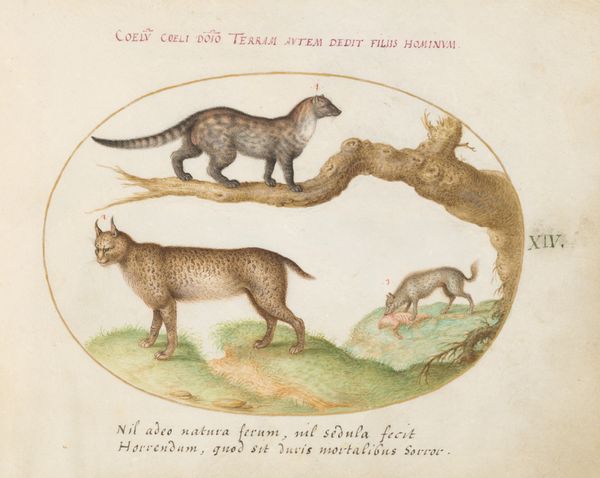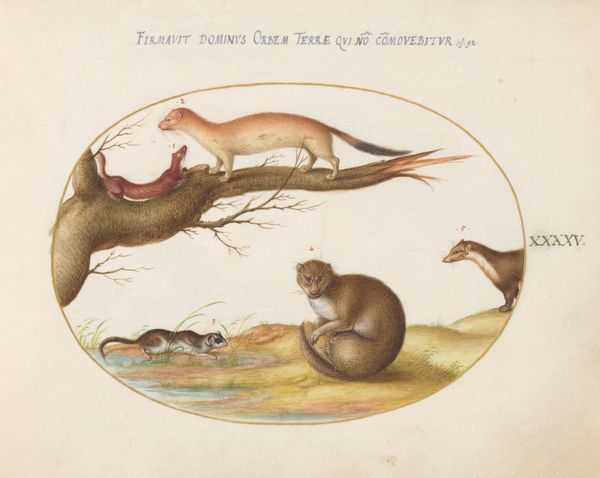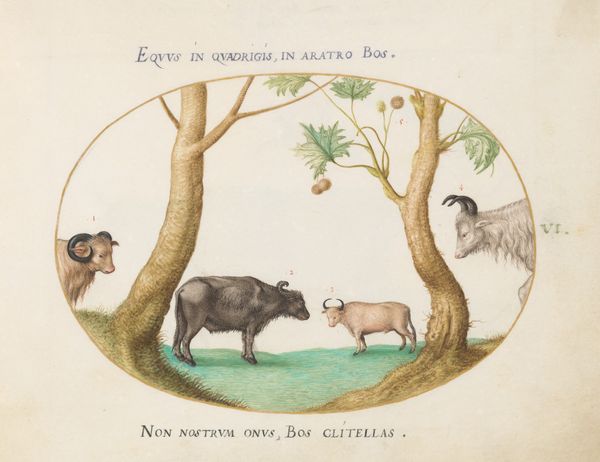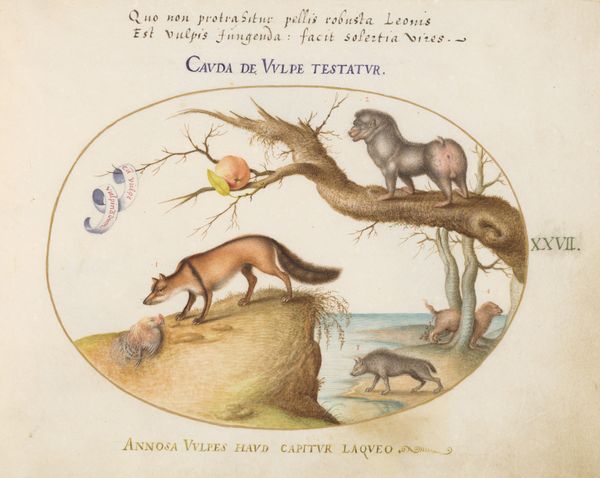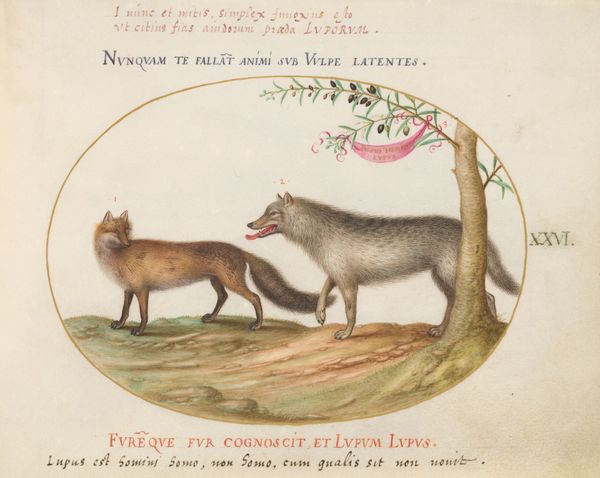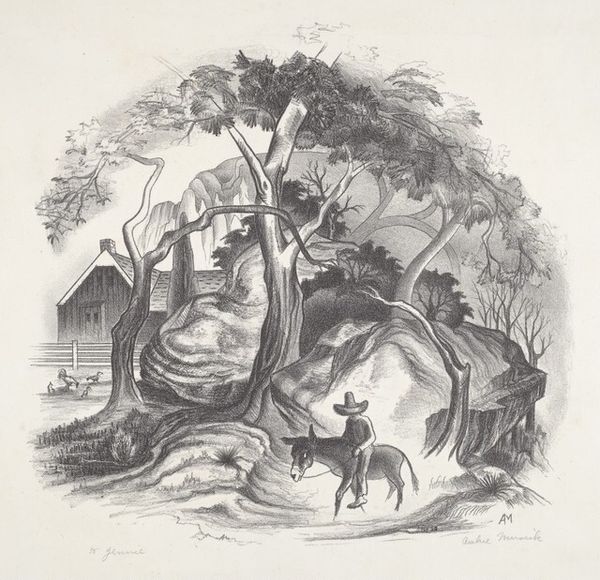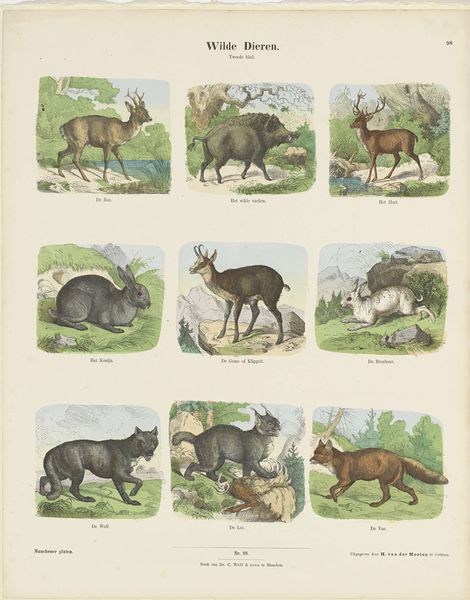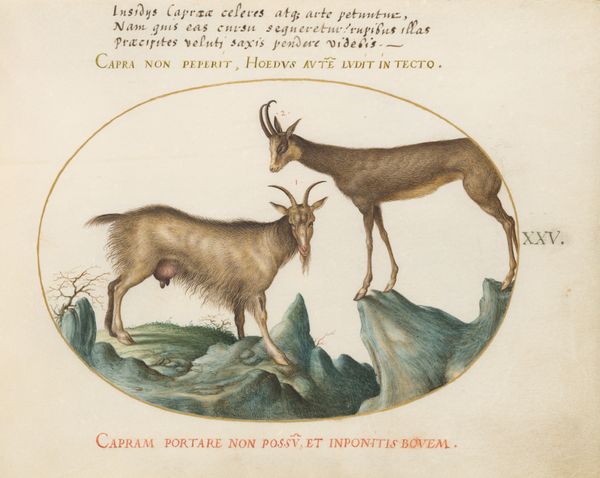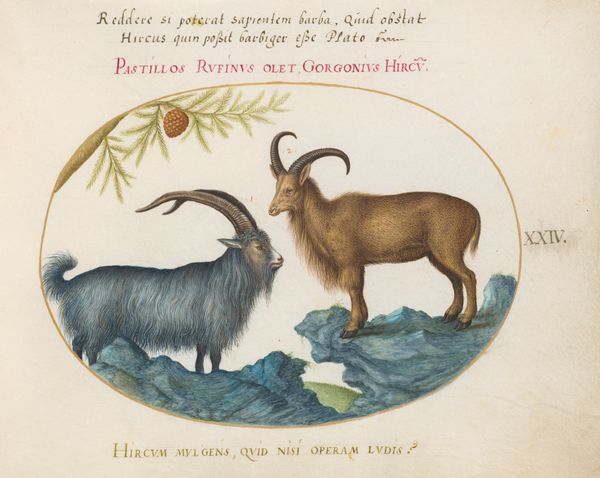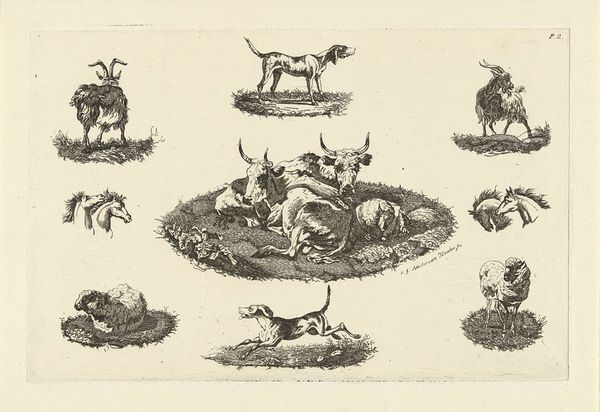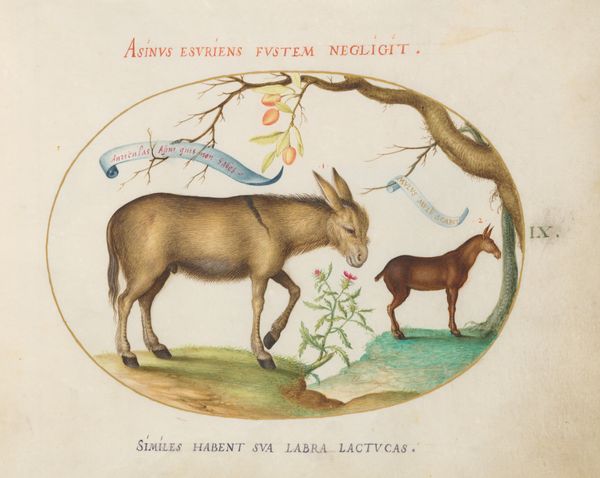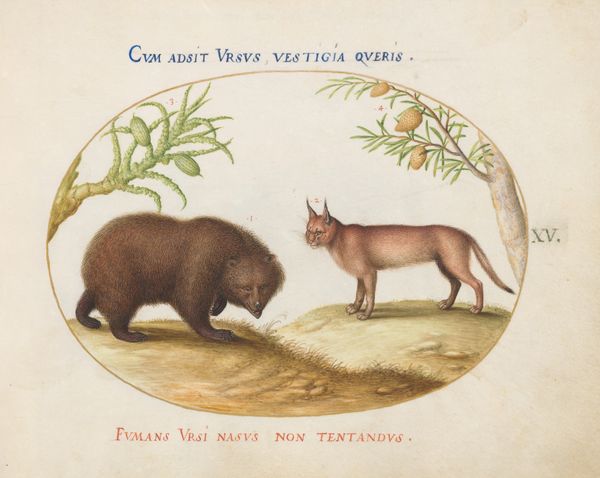
Plate 49: Marmot, Hamsters, Rat, Field Mouse, Shrew, and a Coatimundi c. 1575 - 1580
0:00
0:00
drawing, coloured-pencil
#
drawing
#
coloured-pencil
#
narrative-art
#
mannerism
#
figuration
#
coloured pencil
Dimensions: page size (approximate): 14.3 x 18.4 cm (5 5/8 x 7 1/4 in.)
Copyright: National Gallery of Art: CC0 1.0
Curator: This captivating image is “Plate 49: Marmot, Hamsters, Rat, Field Mouse, Shrew, and a Coatimundi,” a drawing crafted with coloured pencil by Joris Hoefnagel around 1575 to 1580. Quite the collection, wouldn’t you say? Editor: A collection of charming mischief, I’d say! At first glance, I feel drawn into a bizarre but gentle menagerie—like a Renaissance bestiary trying to put on a polite show of itself. It's oddly sweet, but with this distinct old-world scientific curiosity feel. Curator: You nailed it; Hoefnagel had this incredible flair. Remember that the Renaissance curiosity of the natural world involved allegorical and symbolic meanings of flora and fauna, as well as observational studies. These images aren’t always what they seem. Do any of the groupings resonate with you? Editor: That coatimundi…what's he doing here! All the other animals fit some sort of European context, then boom, there's a little South American guy on the other side of the world. It gives the image this whimsical, borderline surreal twist, which is kind of my aesthetic in a nutshell. Curator: This could be precisely the intended effect, if we dive a little deeper we realize, for example, that the shrew at the bottom carries a hidden layer. Note the inscription "Svo Ipsvs Inditio Perit Sorex". These small additions could very well work as emblems, visual clues towards specific themes or messages, with this text hinting towards self-destruction. Editor: Oh, interesting. So, there's definitely a darker, almost moralistic undercurrent weaving through the playful imagery. Perhaps these "sweet" animals are really illustrating human vices or cautionary tales about character? It would fit within this 16th century art-for-instruction motif that sometimes crops up in emblem books or tarot imagery of the time. It’s kind of a perfect metaphor to examine morality, by dressing vices up with adorableness, or obscuring the reality in something innocent. Curator: Exactly! This is also the Mannerism's style. With its sophisticated elegance and exaggeration in shape, composition, and color, even though appearing like a charming natural observation, hides a wealth of allegorical and symbolical meaning. Editor: Right! And once again I'm under the charm and visual smartness of a timeless art expression. Curator: Precisely! A look back with insight.
Comments
No comments
Be the first to comment and join the conversation on the ultimate creative platform.
